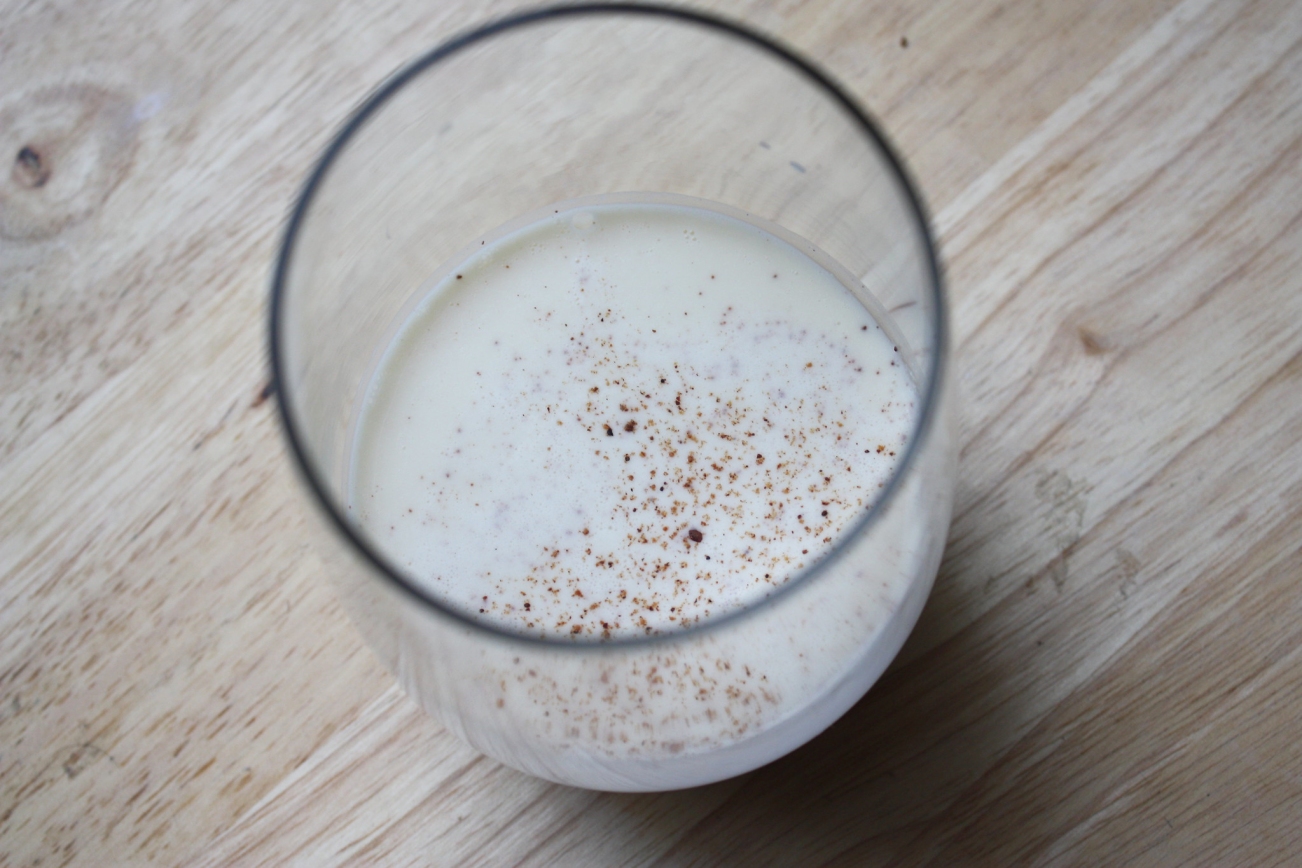 🖨️ Print post
🖨️ Print post
Have you and/or your family had a cup this season?!
Monica Corrado of Simply Being Well offered this simple recipe on her former blog – “raw milk and raw egg yolks; often 5 yolks to about 8–12 oz. of milk. Stir. Down the hatch! I was a disbeliever – and then I tried a glass.” Monica writes, “I do not encourage you to try this with pasteurized milk or cream. Organic or not, from grass-fed cows or not, pasteurized milk is hard to digest for most people and is just not worth it. A possible compromise: use watered down organic, whole milk, plain yogurt with pastured egg yolks. Just “up” the number of yolks and add vanilla and a bit of maple syrup to counter the sour yogurt taste!”
Other nutrient dense recipes:
Basic Eggnog from the Traditional Cooking School
Holiday Eggnog and Eggnog Ice Cream by Passionate Homemaking
Eggnog Recipe from Nourishing Traditions

RECIPES ADDED DECEMBER 2024
Raw Milk Eggnog from Keeping It Holistic
Nourishing Raw Milk Eggnog from Marvel & Make
Holiday Egg Nog: A Nourishing Twist on a Classic Favorite from Biofarm
A bit of history
The reason you won’t find 16th century recipes for “eggnog” is the term didn’t appear in print until the next century. Food historians/period recipes confirm English recipes for posset (esp. sack posset) were very similar to later eggnog. References to 16th century Jamestown eggnog were published after the from 18th century forwards, it is most likely the author was using a newer/more popular and accepted American term to denote an old traditional English holiday beverage.
How old is eggnog? (name in print, not the recipe)
“By the mid-1760s patrons were drinking eggnog, juleps, sling and sanger in addition to the punch and toddy already available.” – “Taverns and Tavern Culture in the Southern Colonial Frontier: Rowan County, North Carolina, 1753-1776,” Daniel B. Thorpe, Journal of Southern History, Vol 4, no. 2, November 1996 (p. 686)
“Rich and creamy dessert drinks, such as eggnog and syllabub, reflect the English heritage in America, especially in the South. In England posset was a hot drink in which the white and yolk of eggs were whipped with ale, cider, or wine. Americans adapted English recipes to produce a variety of milk-based drinks that combined rum, brandy, or whiskey with cream. The first written reference to eggnog was an account of a February 1796 breakfast at the City Tavern in Philadelphia. Beginning in 1839 American cookbooks included recipes for cold eggnogs of cream, sugar, and eggs combined with brandy, rum, bourbon, or sherry, sprinkled with nutmeg. Southerners enjoyed a mix of peach brandy, rum, and whiskey.” – Oxford Encyclopedia of Food and Drink in America, Andrew F. Smith [Oxford University Press:New York] 2004, volume 2 (p. 423)
The earliest reference to eggnog cited in the Oxford English Dictionary [2nd edition, London] is from 1825. The beverage is defined as “A drink in which the white and yolk of eggs are stirred up with hot beer, wine, or spirits.”
What is posset?
“Possets were all the rage in the later Middle Ages, and survived unto the nineteenth century, but are no longer heard of. They were a warming concoction of hot milk mixed with hot beer, sherry, etc., sugar, and various spices, excellent for keeping the cold at bay in the days before central heating, and no doubt effective as a nightcap too. The source of the word is is not known, although some have suggested a link with Latin posca, a term for a drink made from vinegar and water.” – A-Z of Food & Drink, John Ayto [Oxford University Press:Oxford] 2002 (p. 266)
Read more about the history of this holiday tradition and see our discussion on this Facebook post.
Photo credit: Jeffrey Morganthaler.
🖨️ Print post

My Scottish Grandfather (born in 1905) used to make a huge crystal bowl of eggnog for the family Christmas Eve gathering with an absurd amount of cream eggs and of course plenty of rum. I was too young to indulge but my adult relatives were pretty jolly and red-faced by the end of the evenings.